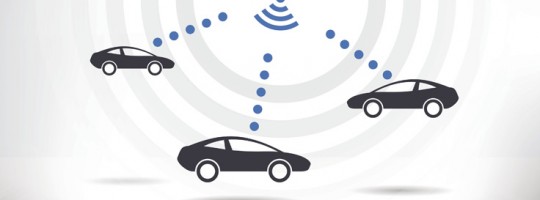Intel Increases Its Auto Industry Focus As Connected Car Technology Grows

Leading PC chipmaker Intel may have missed out on the mobile revolution, but the company appears to be determined to be an early entrant in the Internet of Things (IoT) market, which many consider to be the next big wave in computing.
Simply put, the Internet of Things is the network of physical objects embedded with electronics, software, sensors and connectivity. Each of these objects is uniquely identifiable through its embedded computing system, but can also operate within the Internet infrastructure. IoT can provide advanced connectivity of devices and systems in a variety of scenarios, and is widely discussed in the automotive industry due to the growing developments in connected car technology.
Last year, Intel changed its reporting structure and made IoT a stand-alone segment, illustrating a growing focus for the company. In 2014, the company experienced an 18 percent increase in its IoT revenue. In addition to wearable devices, the increasing demand for Intel’s in-vehicle infotainment systems was a big factor in driving the company’s growth in this segment.
Intel has been involved in the auto industry for many years, working with vehicle manufacturers to develop capabilities and technology. Automotive electronics is a massive market that is currently going through a transition as cars have increased computing capabilities in both the drive train and the dashboard. More and more, the dashboard functionality within cars is being computerized, including infotainment systems and automatic driver assistance.
Currently, research indicates that connected cars are one of the fastest growing technological devices. MarketsandMarkets, the global market research and consulting company, estimates that the global In-Car Infotainment market will reach $14.4 billion by 2016, with a compound annual growth rate (CAGR) of 12.1 percent. Strategy Analytics expects that the market for Advanced Driver Assistance Systems will generate approximately $15 billion by 2016, with a CAGR of 23 percent. Furthermore, research firm Gartner predicts that by 2016, most vehicle buyers in mature automotive markets will consider connected-vehicle features to be a key factor in their purchasing decision.
Clearly, the interest in connected cars is expanding rapidly, with automakers spending an increasingly large amount of their budgets on infotainment and in-car technology.
However, with so many different players competing in this space, where does Intel stand in this market?
Intel announced its plans for the connected car last year, launching a wide range of new hardware and software products known as Intel In-Vehicle Solutions. Additionally, the company has been making investments and conducting research to help the connected car of the future become a reality.
In 2012, to help develop technologies and to increase its involvement in the segment, Intel initiated a $100 million Capital Connected Car Fund. Subsequently, it made investments in many companies involved in connected car technology, including ZMP, CloudMade, Mocana and Tobii Technology.
Through these initiatives, Intel aims to become a solution partner for multiple functional areas of the connected vehicle, including telematics, advanced driver assistance systems and mobility innovations. Several companies use Intel’s technology to power in-vehicle infotainment systems and advanced driver assistance capabilities, including Hyundai, BMW, Infiniti and Kia. However, despite its initiatives, Intel is not in the top ten suppliers of the application-specific standard product semiconductors for the automotive infotainment market.
Although the company continues these initiatives, it appears that Intel may have a long road ahead before it makes a major mark in the automotive industry.












Warning: count(): Parameter must be an array or an object that implements Countable in /home/pg4b1yzvrqqo/domains/test.drivingsalesnews.com/html/wp-includes/class-wp-comment-query.php on line 399